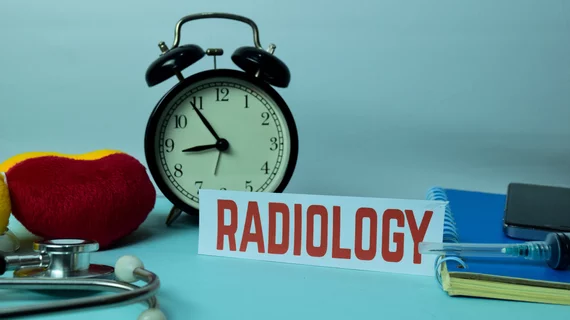Employing a full-time reading room coordinator boosts radiologist efficiency, reduces turnaround times
Employing a full-time reading room coordinator can help to boost radiologist efficiency while reducing imaging exam turnaround times, according to an analysis published Thursday in JACR.
Few level 1 trauma centers employ such a position, typically tasked with fielding phone calls from referrers, triaging requests to residents and relaying critical results. (One study estimated that only 23% of surveyed academic radiology centers have a call assistant triage program.)
Amid an increasing volume of imaging studies, the University of Iowa opted to add this position to mitigate the impact of workflow disruptions. Researchers with the Midwest institution recently analyzed data following the practice change and found promising results. Average turnaround time was about seven minutes faster in the ED and 10.2 minutes for inpatients, after the hiring of a reading room coordinator.
“Interruptions to workflow and imaging interpretation have adverse consequences,” Bruno Policeni, MD, MBA, with the University of Iowa’s Department of Radiology, and colleagues wrote Sept. 28. “From a large-scale retrospective pre- and post-intervention review, we found benefits to implementing a paid, permanent [reading room coordinator] or call-triage assistant position, which increases efficiency of radiology residents on-call by reducing turnaround time in reporting emergent and inpatient radiologic studies, thereby facilitating clinical care.”
Iowa began hiring coordinators in January 2021, with permanent, full-time overnight and weekend positions established in June of the same year. For the present investigation, Policeni et al. analyzed data from the second half of 2019 (excluding 2020, when COVID disrupted imaging volumes) and compared it against July to December of 2021 after the intervention.
Residents interpreted a total of 64,406 studies on-call across the two time periods. After bringing aboard coordinators, the percentage of ED studies signed within 30 minutes increased from 57.7% up to 65.8%, or about 8.1%. Iowa saw particular gains among postgraduate year 3 residents, whose average turnaround time in the emergency department dropped by 11.6 minutes. There was no significant difference among year 4 residents, while those in PGY-5 actually saw an increase in turnaround times, the authors found. The coordinator’s impact also appeared to be more profound during weekday overnight shifts versus weekday evenings.
“The trend for the PGY-3 residents is particularly insightful, as junior residents starting call generally have a more cautious reading speed compared to their senior counterparts, and at our institution, read a higher volume of studies (driven by plain radiographs),” Policeni et al. reported. “Therefore, the presence of an [reading room coordinator] to minimize interruptions was most impactful for the junior residents on call.”
Read much more, including potential study limitations, in the Journal of the American College of Radiology at the link below.

